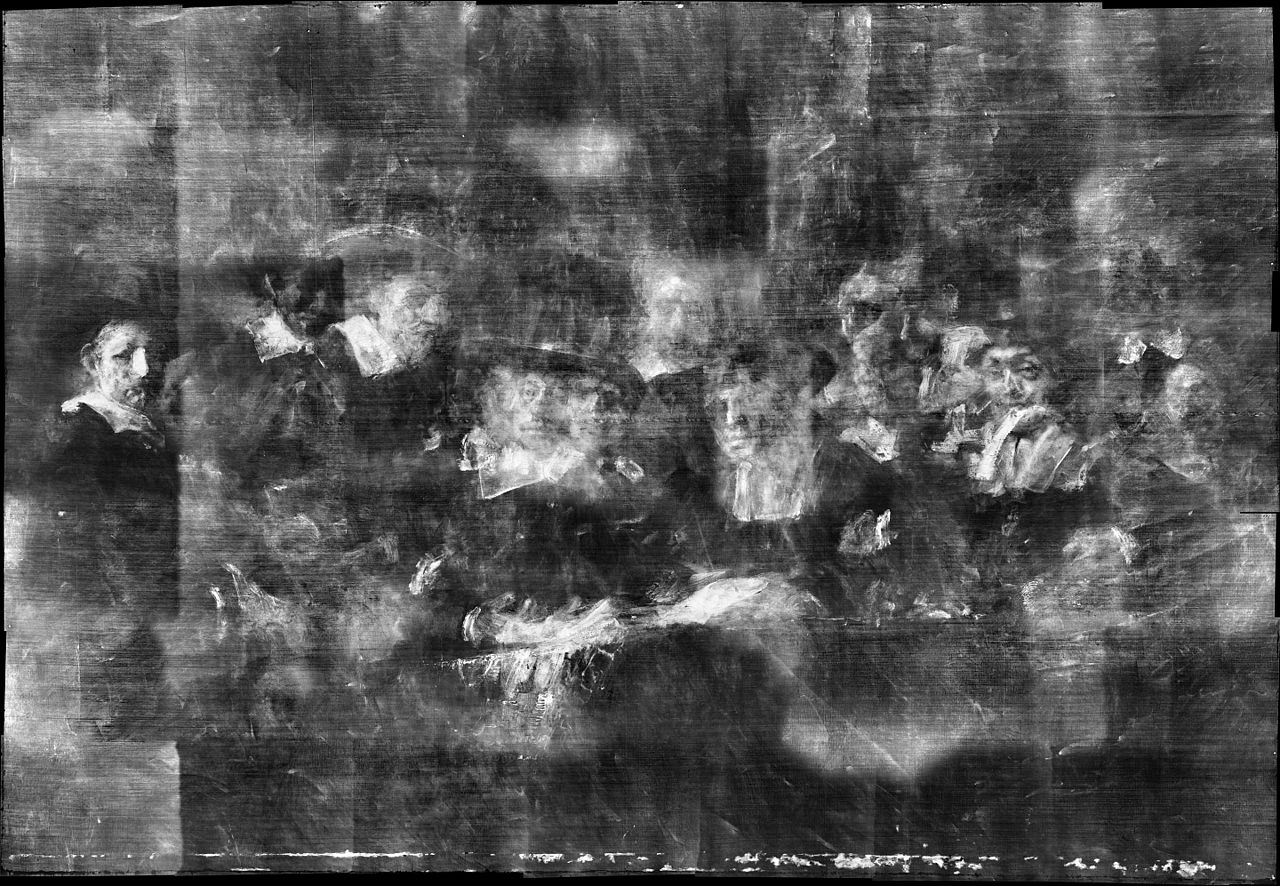
X-rays were discovered in 1895 by Wilhelm Conrad Roentgen. Although they are most widely used in the realm of medicine, they also provide a technical method for examining artwork. X-radiography is unique because it is a non-invasive and non-destructive technique that provides information about the construction, structure, and condition of a work. Additionally, it can be used to identify the materials that the object is made from and expose layers of underpainting. This information is important not only for guiding the conservation of an object, but also for attributing it to the correct artist and determining the authenticity of the object. This technique was used to analyze Annunciation and allowed researchers to distinguish the work done by Leonardo da Vinci from the work done by his mentor, Andrea del Verrocchio. The image to the left shows the x-radiograph of Rembrandt van Rijn's The Syndics of the Amsterdam Drapers' Guild, revealing alternate compositions of the group that Rembrandt considered before completing the final painting.
“Digital Radiography.” Museum Conservation Institute Imaging Studio, Smithsonian Institute, www.si.edu/MCIImagingStudio/X-ray.
History.com Editors. “German Scientist Discovers X-Rays.” History, A&E Television Networks, 24 Nov. 2009, www.history.com/this-day-in-history/german-scientist-discovers-x-rays.
Image Retrieved from Wikimedia Commons, fair use
